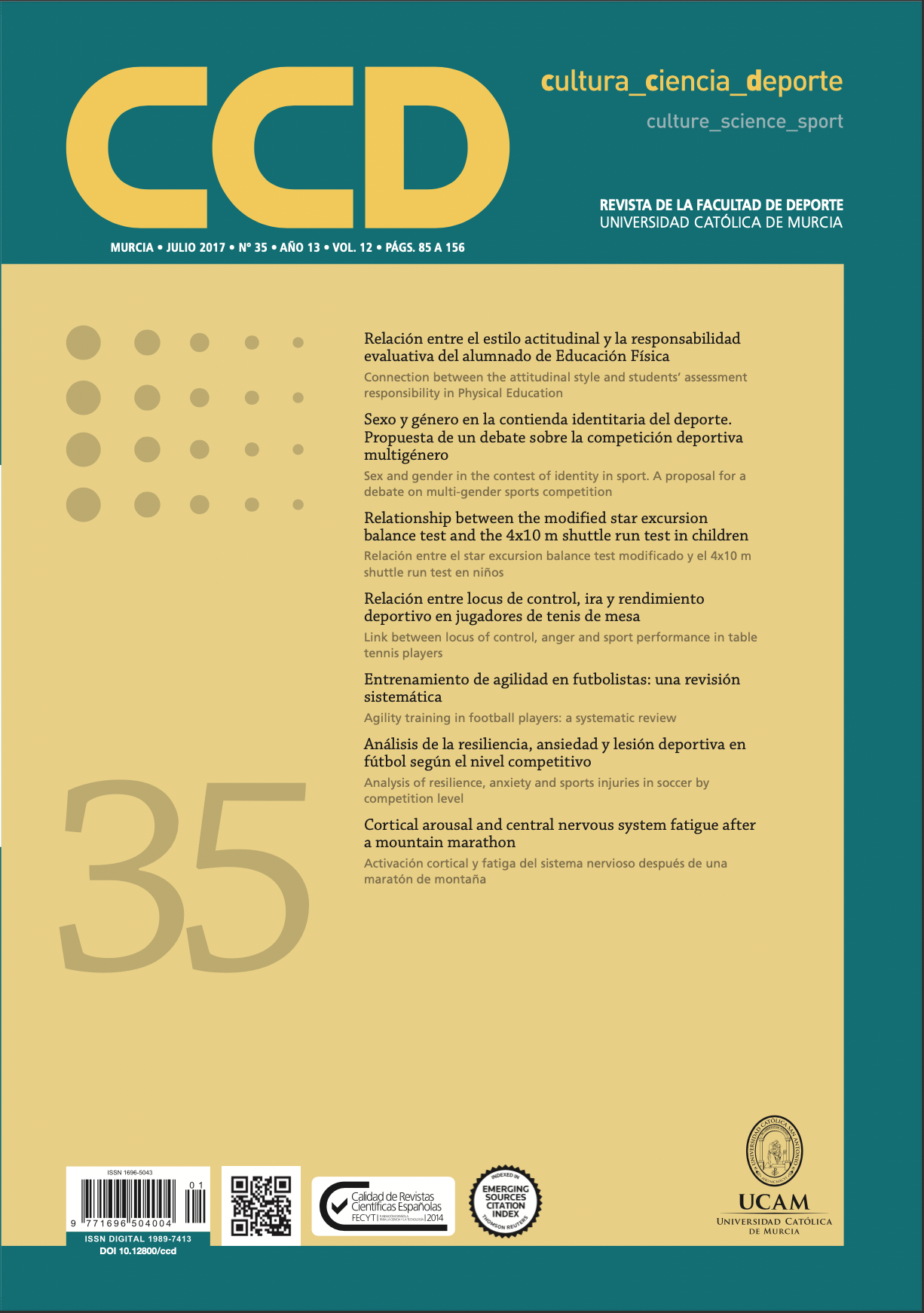Relationship between the modified star excursion balance test and the 4x10 m shuttle run test in children. (Relación entre el star excursion balance test modificado y el 4x10 m shuttle run test en niños).
DOI:
https://doi.org/10.12800/ccd.v12i35.882Abstract
La agilidad y el equilibrio dinámico son habilidades cruciales en la actividad física prepuberal y la participación deportiva, por lo tanto es necesaria la identificación de pruebas eficientes para su evaluación. Evaluar la correlación entre la agilidad y el equilibrio dinámico en niños escolares de primaria. Veintisiete niños y veinte niñas de 10 años participaron voluntariamente en el estudio. El Star Excursion Balance Test (SEBT) modificado y el 4x10 m Shuttle
Run Test se utilizaron respectivamente para evaluar el equilibrio dinámico y agilidad. Las puntuaciones compuestas del equilibrio dinámico con apoyo diestro mostraron solo entre los niños una moderada correlación significativa (r = -0.51, p < 0.05) con la prueba de agilidad. Sin embargo, entre las niñas se mostró una correlación significativa (r = -0.45, p < 0.05) durante la distancia de alcance posterolateral obtenida en el SEBT. La realización del test completo o de las distancias alcanzadas a nivel posteromedial y posterolateral del SEBT se asocia moderadamente con la agilidad entre los niños, mientras que la distancia posterolateral se asocia con la agilidad entre las niñas.
Palabras clave: Equilibrio dinámico, agilidad, escuela primaria.
===
Abstract
Agility and dynamic balance are crucial skills in prepubertal physical activity and sport participation, so the identification of efficient tests for their assessment is necessary. To evaluate the correlation between agility and dynamic balance in primary school children. Twenty-seven boys and twenty girls aged 10 years, volunteered to participate in the study. The modified Star excursion balance test and the 4x10 m shuttle run test were used in order to assess dynamic balance and agility respectively. Dynamic balance composite scores with the right stance showed a moderate significant correlation (r = -0.51, p < 0.05) with the agility test only among boys. However, significant correlation among girls (r = -0.45, p < 0.05) was showed during the posterolateral reaching distance of the Star excursion balance test. The performance of the complete test or the posteromedial and posterolateral reaching distances of the Star excursion balance test is moderately associated with agility among boys, whereas the posterolateral distance is associated with agility among girls.
Key words: Dynamic balance, agility, primary school.
Downloads
Published
How to Cite
Issue
Section
License
The authors who publish in this journal agree with the following terms:
- The authors retain the copyright and guarantee the journal the right to be the first publication of the work as well as licensed under a Creative Commons Attribution License that allows others to share the work with recognition of the authorship of the work and the initial publication in this journal.













